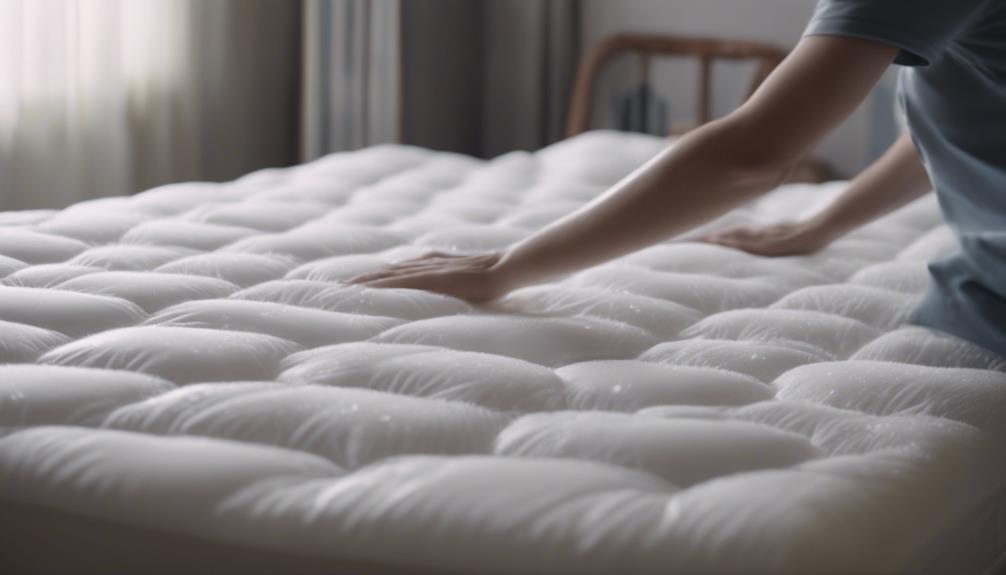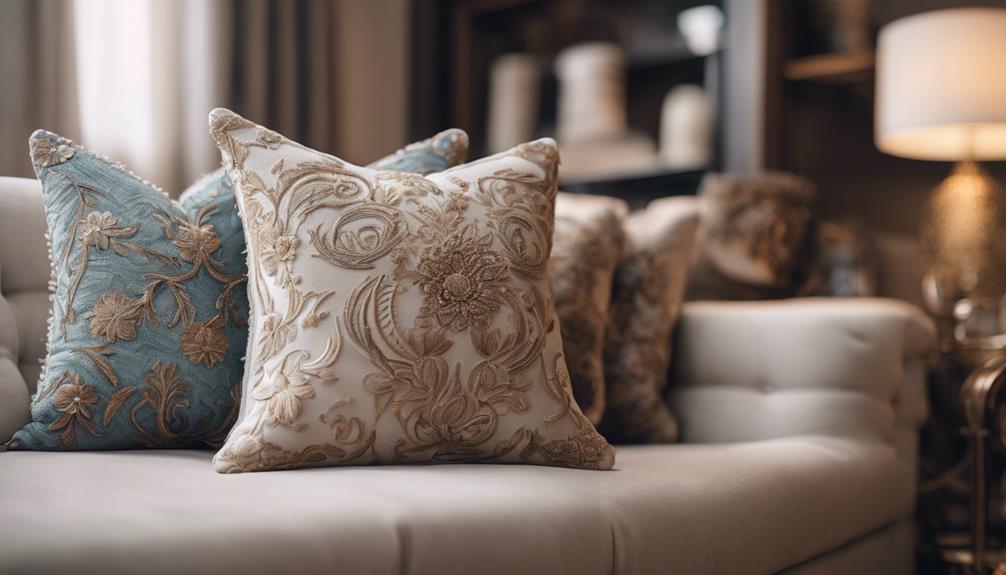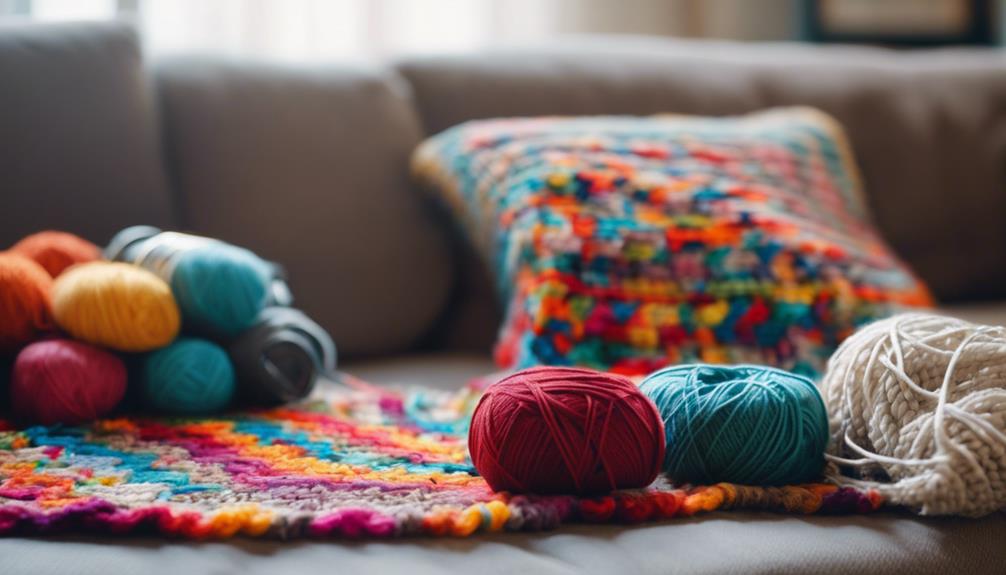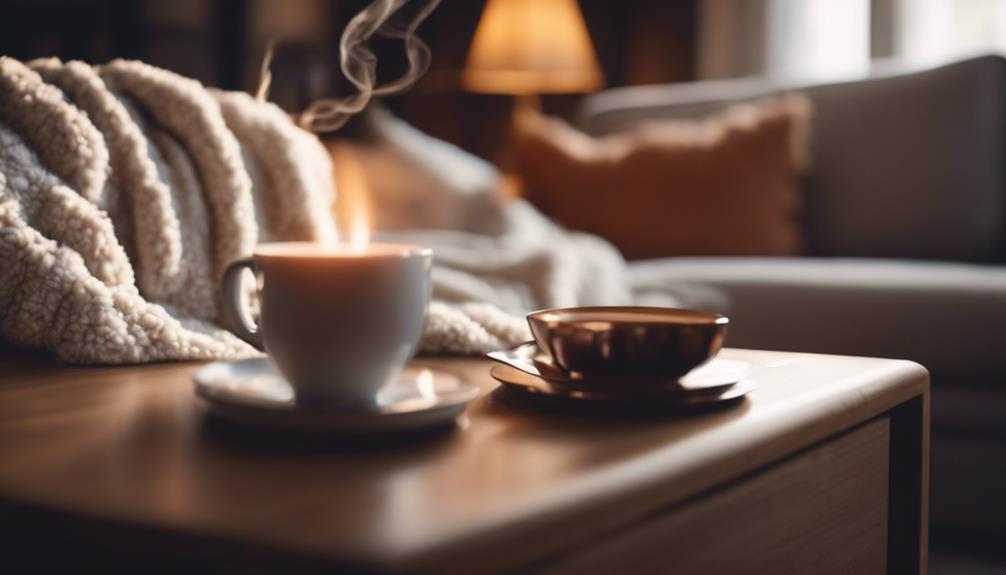Electric throw blankets provide cost-effective operation due to their energy efficiency, using only about 190 watts of electricity. This feature helps reduce heating costs, making them a budget-friendly option. In comparison to other heating options, they offer substantial cost savings. By offering personalized warmth and lower energy consumption, they are a practical choice. Factors such as room size and usage time affect operating costs. Adhering to safety precautions ensures efficient and safe use. For individuals interested in cutting down on heating expenses, electric throw blankets are a smart investment. Explore more about their advantages and efficient use for optimal savings.
Key Takeaways
- Electric throw rugs are cost-effective and energy-efficient.
- They use low wattage, leading to savings on heating bills.
- Personalized heating reduces overall energy consumption.
- Efficient usage tips maximize cost savings.
- Long-term benefits include significant savings on energy bills.
Cost-Effective Heating Solution
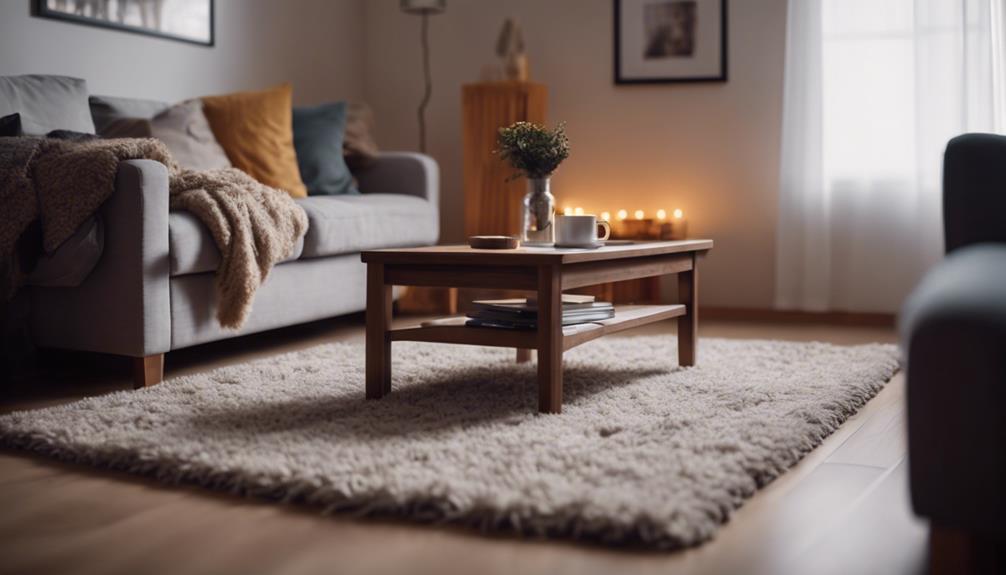
Are electric throw rugs truly a cost-effective heating solution for your home?
Electric throw rugs are indeed a smart choice when considering heating costs. These rugs only use around 190 watts of electricity, making them energy-efficient and budget-friendly. While traditional heaters may consume more energy to warm an entire room, electric throw rugs provide direct personal heating, which can be a more efficient option.
By using minimal energy, these rugs help save money on heating bills, especially in colder climates where heating costs can add up quickly. Organizations like Green It Yourself advocate for energy-efficient solutions like electric throw rugs to promote cost-effective heating alternatives.
Energy Efficiency of Electric Throw Rugs
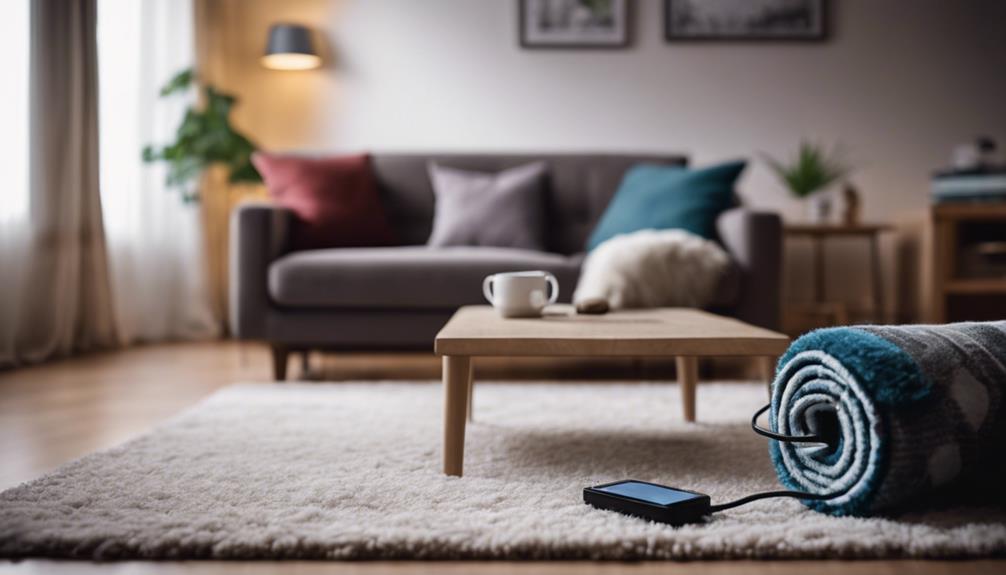
Electric throw rugs' energy efficiency is a key factor in their cost-effectiveness as a heating solution. When considering the energy efficiency of electric blankets, there are several important points to keep in mind:
- Electric throw rugs typically consume around 190 watts, making them an energy-efficient option for personal heating.
- Direct personal heating with electric throw rugs can be more energy-efficient than heating an entire room, as it targets warmth where it's needed.
- Using an electric throw rug on a low setting to pre-warm before switching off central heating can help conserve energy effectively.
Taking advantage of the energy efficiency of electric throw rugs by combining them with smart heating practices, such as lowering the thermostat and using the blanket for individual warmth, can lead to notable energy savings. Opting for energy-efficient solutions like electric throw rugs not only helps reduce overall heating costs but also contributes to lower energy consumption.
Comparative Cost Analysis

Considering the cost efficiency of electric throw rugs compared to traditional heating methods reveals significant savings potential. Electric throw rugs are not only energy-efficient but also cost-effective to run. They consume approximately 190 watts of electricity, which is lower than many other heating options. This lower energy usage translates to savings on heating bills, aligning with goals for energy efficiency and reduced expenses. To illustrate this point, let's compare the cost to run an electric throw rug with other heating methods in the table below:
| Heating Option | Electric Blanket Costs | Energy Consumption | Savings Potential |
|---|---|---|---|
| Electric Throw Rug | Low | 190 watts | High |
| Space Heater | Moderate | 1500 watts | Moderate |
| Central Heating | High | Varies | Low |
| Fireplace | Moderate | Varies | Moderate |
As shown, using an electric throw rug can save energy and money compared to other heating options, making it a cost-effective choice for personal heating needs.
Electric Throw Rug Vs. Other Heating Options
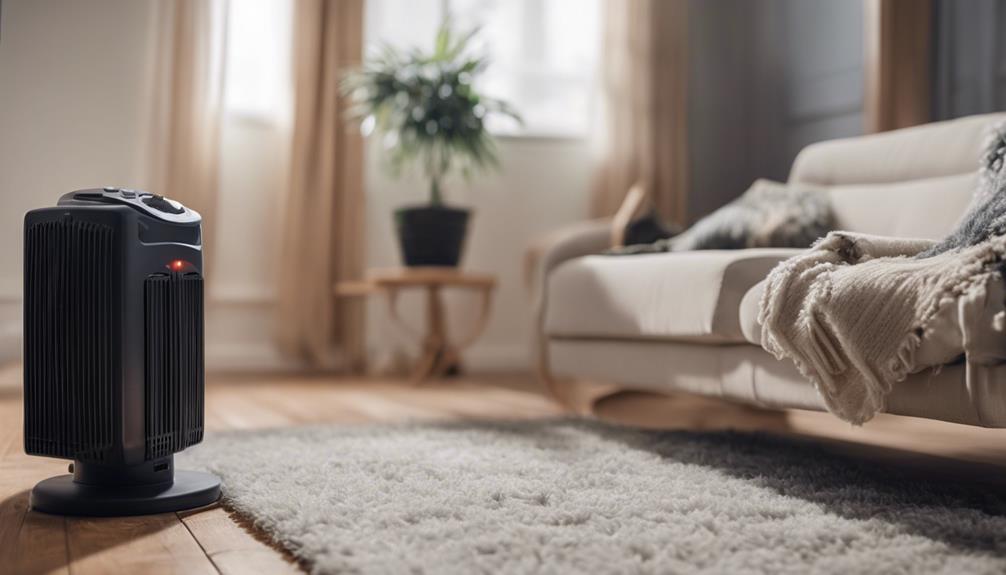
When comparing electric throw rugs to other heating options, one can clearly see the potential for energy and cost savings. Electric throw rugs are a cost-effective choice, typically using around 190 watts of electricity. Here are a few points to take into account:
- Targeted Heating: Electric throw rugs provide personalized warmth, unlike central heating systems that heat entire rooms, potentially leading to lower energy costs.
- Efficiency: Direct personal heating with electric throw rugs can be more efficient than relying on central heating to warm up the entire house.
- Energy Consumption: Electric throw rugs have lower energy consumption compared to many other heating options, making them a more economical choice from a cost per kilowatt-hour perspective.
Considering these factors, electric throw rugs stand out as a practical and budget-friendly option for staying warm during colder months while keeping energy costs in check.
Factors Affecting Running Costs

When considering the running costs of electric throw rugs, it's crucial to look at factors like:
- Energy consumption comparison
- Operating hours impact
- Heating efficiency evaluation
These elements can greatly influence how cost-effective it is to run an electric throw rug in your home. Understanding these factors can help you make informed decisions about using electric throw rugs for personal heating needs.
Energy Consumption Comparison
To compare energy consumption and running costs of electric throw rugs, we analyze their efficiency in providing targeted personal heating.
- Electric throw rugs typically use around 190 watts, making them cost-effective for personal heating.
- Direct personal heating with electric throw rugs is more efficient than heating an entire room.
- Energy consumption of electric throw rugs is lower compared to traditional heaters, resulting in cheaper running costs.
Operating Hours Impact
Taking into consideration the impact of operating hours on running costs, adjusting the duration of use for electric throw rugs can greatly influence overall energy expenses.
The cost of running electric throw rugs is directly proportional to the wattage of your blanket and the number of hours a day it's in use. Higher wattage blankets will incur higher costs per hour compared to lower wattage ones.
To enhance cost-effectiveness, consider running the electric throw rug for shorter periods or pre-warming it on a low setting before use.
Factors such as room size, insulation, and personal comfort preferences play a role in determining the most suitable operating hours for your electric throw rug to balance warmth and energy efficiency.
Heating Efficiency Evaluation
Maximizing the heating efficiency of electric throw rugs involves understanding the factors that affect running costs.
- Electric throw rugs typically use around 190 watts, making them energy-efficient for personal heating.
- Direct personal heating with electric throw rugs can be more cost-effective than heating an entire room.
- Energy-saving tips like pre-warming the throw rug on a low setting can contribute to lower running costs.
Tips for Maximizing Cost Savings

To maximize cost savings when running electric throw rugs, consider implementing energy-saving heating strategies such as layering clothes for added warmth and reducing the thermostat setting.
Efficient temperature control can be achieved by using the throw rug in conjunction with other heating sources, allowing for targeted warmth.
Cost-effective usage tips like allowing sunlight in and draught-proofing can further enhance the efficiency of electric throw rugs in reducing energy costs.
Energy-Saving Heating Strategies
Layering clothes and utilizing natural sunlight are effective ways to enhance energy efficiency and reduce heating costs. This can be complemented by the use of electric throw rugs for personal warmth.
- Set your thermostat lower and use an electric throw rug for targeted warmth.
- Draught-proof windows and doors to prevent heat loss.
- Use a programmable thermostat to regulate temperatures efficiently.
Efficient Temperature Control
When seeking to enhance energy efficiency and reduce heating costs, utilizing an electric throw rug for targeted warmth is a practical and effective strategy. Direct personal heating with an electric throw rug is more efficient than heating an entire room, leading to significant energy cost reductions. Efficient temperature control with an electric throw rug helps focus heat where needed, saving on overall energy consumption. Pre-warming the rug on a low setting before use can further maximize cost savings. By lowering the thermostat and using an electric throw rug strategically, you can create a cozy environment while keeping energy costs in check. Check out the table below for a visual representation of the benefits of efficient temperature control with an electric throw rug.
| Benefits of Efficient Temperature Control with Electric Throw Rug | |
|---|---|
| Efficient personal heating | Maximizes cost savings |
| Targets warmth where needed | Reduces overall energy consumption |
| Pre-warming saves energy | Creates a cozy environment |
Cost-Effective Usage Tips
Maximizing cost savings with electric throw rugs involves optimizing their usage to efficiently heat targeted areas and reduce overall energy consumption. To make the most of your electric throw rug in a cost-effective manner, consider the following tips:
- Focus on Personal Heating: Direct the heat towards where you're seated or lounging to avoid heating the entire room unnecessarily.
- Use Timer Settings: Set a timer to make certain the electric throw rug is only on when needed, reducing energy wastage.
- Combine with Lower Thermostat Settings: Pair the electric throw rug with a lower thermostat setting for the central heating system to save on overall heating costs.
Safety Considerations for Running Electric Throw Rugs
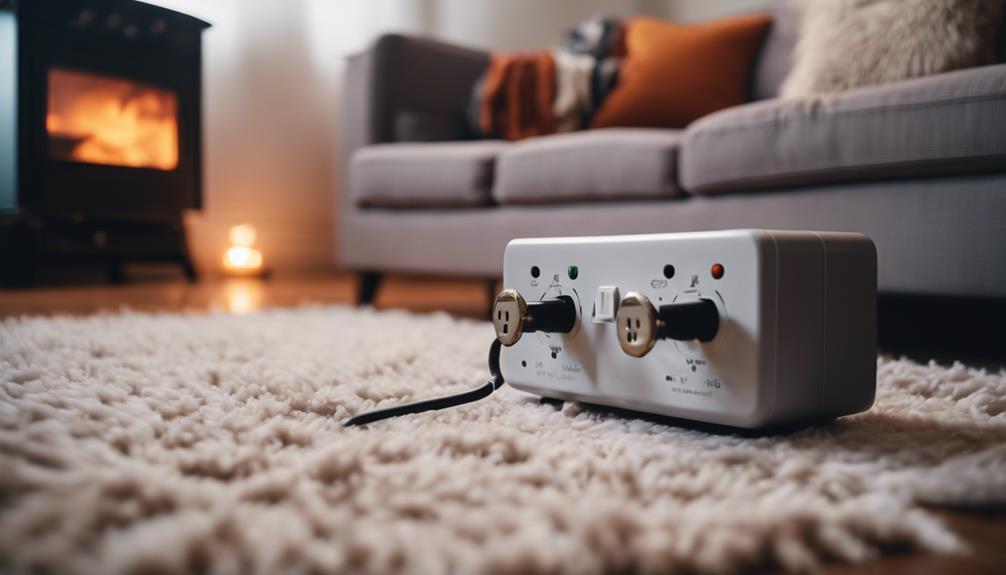
To guarantee safe operation of electric throw rugs, it's vital to conduct regular checks for frayed wires or damage before use. Following safety considerations is essential to prevent potential hazards.
Adhering to manufacturer instructions for the proper usage of electric throw rugs is significant to avoid accidents or damage. Make sure that the electric throw rugs are kept away from flammable materials and are placed on stable, flat surfaces to prevent overheating or fires.
Monitoring energy consumption while using electric throw rugs can help track usage patterns and ensure efficient and safe operation. By staying vigilant and following these guidelines, the risk of accidents related to electric throw rugs can be minimized, providing a safe and cozy heating option for your home.
Long-Term Cost Benefits
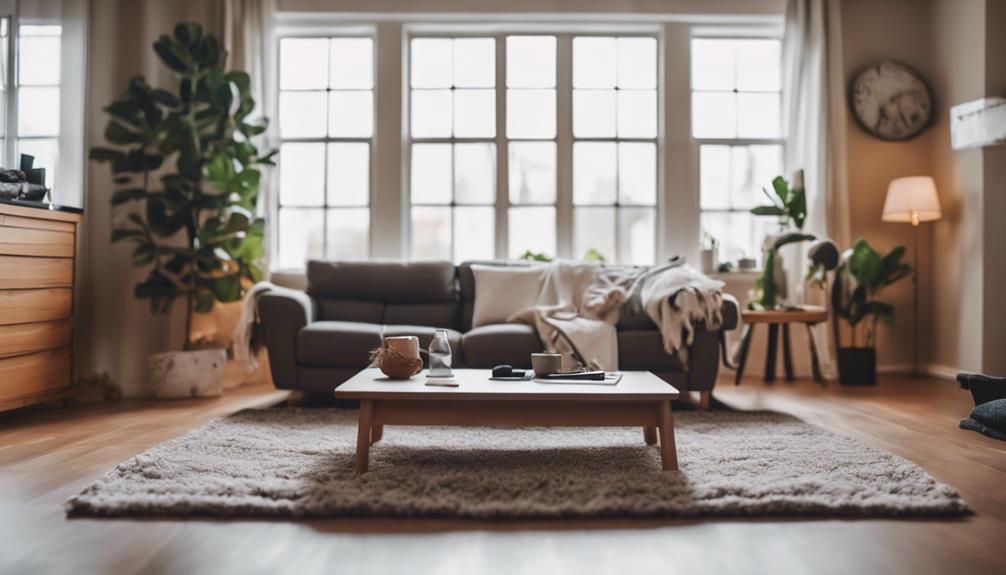
For those seeking economical heating solutions, the long-term cost benefits of utilizing electric throw rugs are worth considering. Electric throw rugs are a cost-effective option, using around 190 watts of electricity, which can lead to significant savings on energy bills over time. Here are three key reasons why electric throw rugs can be a wise investment:
- Personal Heating: Electric throw rugs provide direct personal heating, focusing warmth where it's needed most, which can be more efficient than heating an entire room.
- Minimal Energy Usage: Compared to other heating options, electric throw rugs use minimal energy, resulting in lower running costs and decreased energy bills.
- Budget-Friendly: By offering targeted warmth, electric throw rugs act as a budget-friendly heating solution for individuals, allowing for customizable comfort without breaking the bank.
In the long run, the cost benefits of using electric throw rugs can make them a practical and cost-efficient choice for staying warm while keeping energy expenses in check.
Conclusion: Are Electric Throw Rugs Worth It?
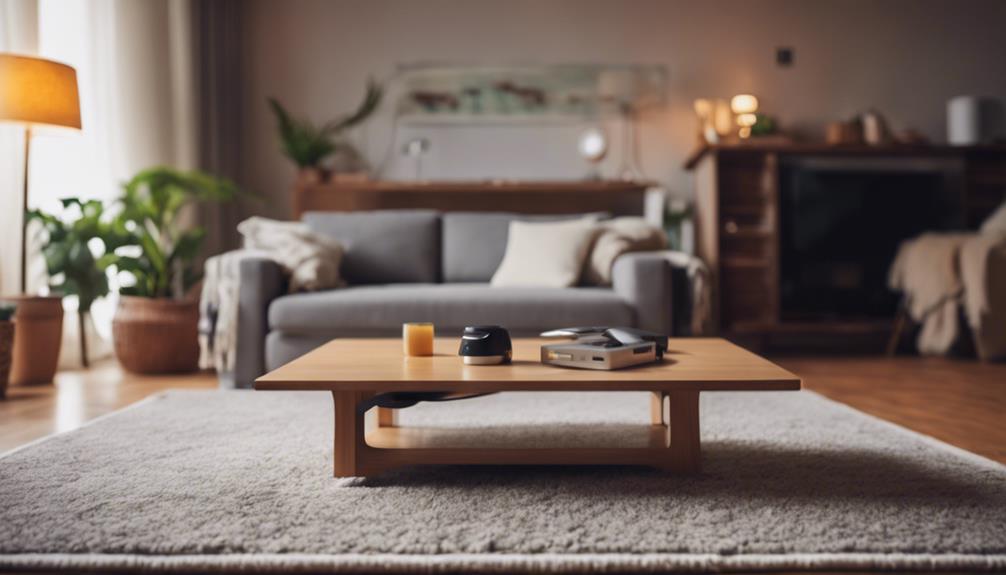
In our assessment, electric throw rugs prove to be a cost-effective and efficient heating solution for individuals seeking personalized warmth without incurring high energy expenses. With their low energy consumption and targeted heating capabilities, heated throw rugs offer a practical way to stay warm while saving on heating costs. To illustrate the benefits of electric throw rugs, consider the following comparison table:
| Aspect | Heated Throw Rugs | Central Heating Systems | Portable Heaters |
|---|---|---|---|
| Energy Usage | Low | High | Moderate |
| Cost per Hour | Around 2 cents | Varies | Varies |
| Efficiency | High | Moderate | Moderate |
| Targeted Heating | Yes | No | No |
| Convenience | High | Low | Moderate |
From the table, it is evident that heated throw rugs offer a combination of cost-effectiveness, energy efficiency, and personalized heating that make them a worthwhile investment for those looking to enhance their comfort during colder seasons.
Frequently Asked Questions
Do Electric Throw Rugs Use Much Power?
Electric throw rugs use around 190 watts of power, making them energy-efficient for personal heating. Compared to other heaters, they're cost-effective due to their lower power consumption.
Direct personal heating with electric throw rugs can be more efficient than heating an entire room. Running them for an hour costs approximately 2 cents, making them a budget-friendly option.
They're a practical solution for those looking to save on heating costs.
Is an Electric Throw Expensive to Run?
Electric throw rugs are cost-effective for personal heating needs. They typically use around 190 watts, costing about 2 cents per hour to run. Compared to other heating options, they're efficient in energy consumption and provide direct warmth.
Using an electric throw rug can save money on heating bills by offering targeted heat. Personalized heating can be more efficient than heating entire rooms, making electric throw rugs a practical choice for staying warm economically.
Does an Electric Throw Use a Lot of Electricity?
Electric throw rugs don't use a lot of electricity. They typically consume around 190 watts, which is considered low. This translates to roughly 2 cents per hour to run, making them a cost-effective heating option.
They offer targeted warmth, saving energy by heating only where needed. In comparison to central heating, electric throw rugs are a more economical choice for staying warm.
How Much Does Dreamland Heated Throw Cost to Run?
When it comes to the Dreamland heated throw rug, running costs are a mere 2 cents per hour. With its energy-efficient 190-watt power, this cozy companion won't break the bank. Multiply the wattage by your electricity rate to pinpoint the cost.
Using it for 6 hours daily could set you back around 12 cents. Compared to other heating options, this throw rug offers warm comfort without burning a hole in your pocket.
What Is the Cost of Running an Electric Throw Rug?
Electric throw rugs are not necessarily expensive to run. With energy-efficient technologies, the cost of running an electric throw rug can be quite affordable. However, it ultimately depends on the specific model and how long it is used each day. Comparing energy usage and cost before purchase is a wise idea.
Conclusion
To sum up, electric throw rugs are a cost-effective heating solution for staying warm during the colder months.
One interesting statistic to note is that electric throw rugs can cost as little as 1 cent per hour to run, making them a highly efficient option for keeping cozy without breaking the bank.
With proper usage and safety precautions, electric throw rugs can provide long-term cost benefits and are definitely worth considering for your heating needs.

